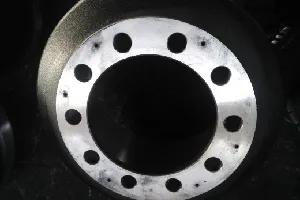
-
 Afrikaans
Afrikaans -
 Albanian
Albanian -
 Amharic
Amharic -
 Arabic
Arabic -
 Armenian
Armenian -
 Azerbaijani
Azerbaijani -
 Basque
Basque -
 Belarusian
Belarusian -
 Bengali
Bengali -
 Bosnian
Bosnian -
 Bulgarian
Bulgarian -
 Catalan
Catalan -
 Cebuano
Cebuano -
 Corsican
Corsican -
 Croatian
Croatian -
 Czech
Czech -
 Danish
Danish -
 Dutch
Dutch -
 Angličtina
Angličtina -
 Esperanto
Esperanto -
 Estonian
Estonian -
 Finnish
Finnish -
 French
French -
 Frisian
Frisian -
 Galician
Galician -
 Georgian
Georgian -
 German
German -
 Greek
Greek -
 Gujarati
Gujarati -
 Haitian Creole
Haitian Creole -
 hausa
hausa -
 hawaiian
hawaiian -
 Hebrew
Hebrew -
 Hindi
Hindi -
 Miao
Miao -
 Hungarian
Hungarian -
 Icelandic
Icelandic -
 igbo
igbo -
 Indonesian
Indonesian -
 irish
irish -
 Italian
Italian -
 Japanese
Japanese -
 Javanese
Javanese -
 Kannada
Kannada -
 kazakh
kazakh -
 Khmer
Khmer -
 Rwandese
Rwandese -
 Korean
Korean -
 Kurdish
Kurdish -
 Kyrgyz
Kyrgyz -
 Lao
Lao -
 Latin
Latin -
 Latvian
Latvian -
 Lithuanian
Lithuanian -
 Luxembourgish
Luxembourgish -
 Macedonian
Macedonian -
 Malgashi
Malgashi -
 Malay
Malay -
 Malayalam
Malayalam -
 Maltese
Maltese -
 Maori
Maori -
 Marathi
Marathi -
 Mongolian
Mongolian -
 Myanmar
Myanmar -
 Nepali
Nepali -
 Norwegian
Norwegian -
 Norwegian
Norwegian -
 Occitan
Occitan -
 Pashto
Pashto -
 Persian
Persian -
 Polish
Polish -
 Portuguese
Portuguese -
 Punjabi
Punjabi -
 Romanian
Romanian -
 Russian
Russian -
 Samoan
Samoan -
 Scottish Gaelic
Scottish Gaelic -
 Serbian
Serbian -
 Sesotho
Sesotho -
 Shona
Shona -
 Sindhi
Sindhi -
 Sinhala
Sinhala -
 Slovak
Slovak -
 Slovenian
Slovenian -
 Somali
Somali -
 Spanish
Spanish -
 Sundanese
Sundanese -
 Swahili
Swahili -
 Swedish
Swedish -
 Tagalog
Tagalog -
 Tajik
Tajik -
 Tamil
Tamil -
 Tatar
Tatar -
 Telugu
Telugu -
 Thai
Thai -
 Turkish
Turkish -
 Turkmen
Turkmen -
 Ukrainian
Ukrainian -
 Urdu
Urdu -
 Uighur
Uighur -
 Uzbek
Uzbek -
 Vietnamese
Vietnamese -
 Welsh
Welsh -
 Bantu
Bantu -
 Yiddish
Yiddish -
 Yoruba
Yoruba -
 Zulu
Zulu
Ways to Measure the Thickness of Drum Brake Shoes for Safety Evaluation
How to Check Drum Brake Shoe Thickness
Checking the thickness of your drum brake shoes is an essential part of vehicle maintenance. Properly functioning brakes are crucial for safety, and worn brake shoes can lead to decreased braking efficiency or even brake failure. Here’s a step-by-step guide on how to check the thickness of your drum brake shoes to help ensure your vehicle operates safely and effectively.
Step 1 Gather Necessary Tools
Before you begin the inspection, you will need some essential tools. These may include a metric or imperial caliper, a jack, jack stands, and potentially a socket set to remove the drums. If your brake system is particularly rusty or corroded, some penetrating oil may also be useful.
Step 2 Safely Lift the Vehicle
Once you have your tools at hand, find a safe and flat surface to work. Park the vehicle in a secure area and apply the parking brake. Using a jack, lift the vehicle until the wheel is off the ground. Securely place jack stands under the vehicle to ensure safety during the inspection.
Step 3 Remove the Wheel and Drum
Next, you will need to remove the wheel by loosening the lug nuts using a socket set. Once the wheel is off, take a closer look at the drum brakes. Depending on your vehicle, you may need to remove the brake drum itself. This can vary by model; sometimes the drum can be removed by pulling it straight off, while other times, you may need to unhook retaining springs or remove additional hardware.
how to check drum brake shoe thickness

Step 4 Inspect the Brake Shoes
With the drum removed, you can now see the brake shoes clearly. Observe their condition visually first—look for any signs of cracking, glazing, or uneven wear. The thickness of the brake shoes is crucial; typically, the shoes should be at least 1/4 inch thick. Any measurement below this can indicate that the shoes need to be replaced.
Using your caliper, measure the thickness of the brake shoes at various points. This ensures that you account for any uneven wear the shoes may have experienced. If you observe a significant difference in thickness between the inner and outer edges, consider replacing the brake shoes.
Step 5 Reassemble and Test
If the brake shoes are still within the safe thickness range, you can replace the drum, put the wheel back on, and lower the vehicle. Make sure to tighten the lug nuts to the manufacturer's specifications and pump the brake pedal a few times before driving to ensure everything is seated properly.
Conclusion
Regularly checking the thickness of your drum brake shoes is vital for maintaining optimal vehicle safety. Following these steps will allow you to perform a thorough inspection and take necessary actions if replacement is needed. Remember, if you feel uncertain about any part of the process or the state of your brakes, it's always wise to consult a professional mechanic. Safety should always be your top priority on the road.
-
What Are Drum BrakesSprávyJul.07,2025
-
Understanding Brake Drum MaterialSprávyJul.07,2025
-
Semi-Trailer Brake Drum: A Key Component for Extreme Loads and Long-Distance TransportSprávyJul.07,2025
-
Drum Brake Pads for SaleSprávyJul.07,2025
-
Brake Drums for SaleSprávyJul.07,2025
-
Brake Drum ManufacturerSprávyJul.07,2025
-
Aluminum Brake Drums: The Future of High-Performance CarsSprávyJul.07,2025
